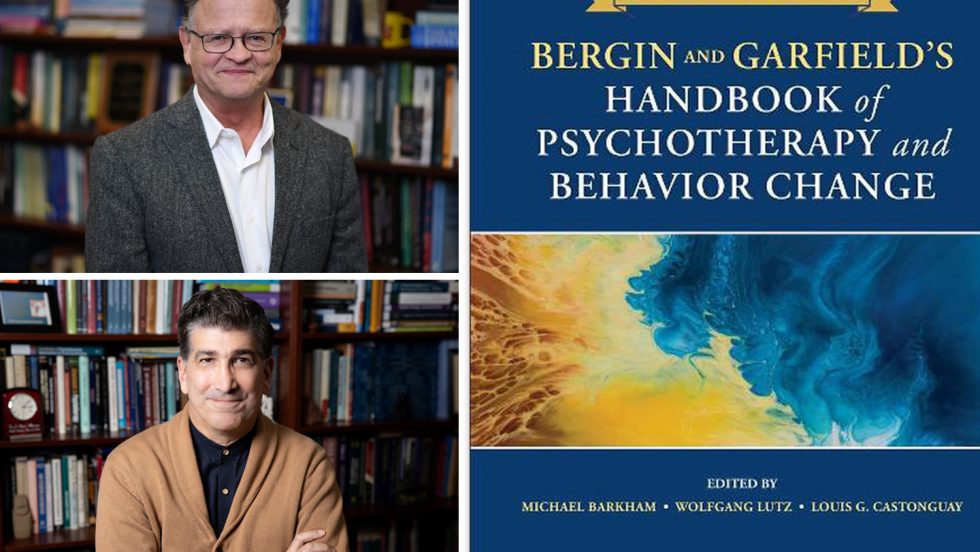
Jacques Barber, PhD, professor and dean, and J. Christopher Muran, PhD, professor and interim dean while Dr. Barber is on sabbatical, have collaborated on a revised psychodynamic therapy chapter in Bergin and Garfield's Handbook of Psychotherapy and Behavior Change 7th Edition (Wiley 2021), considered “the bible of psychotherapy." It builds on the original chapter published in 2013, for which they also collaborated.
Dr. Muran said this is a triumph for Dr. Barber, as the project has always invited leaders in the field; this is the second time the dean is the lead on the psychodynamic chapter. “This is not only a significant chapter in terms of what it tried to organize and how it tried to inform, but it’s also a significant tribute to him as a leader in the psychodynamic world,” Dr. Muran said.
It appears as Chapter 12: Research on Dynamic Therapies in Part IV: Therapeutic Approaches and Formats in the 848-page 50th-anniversary edition, which was released in September 2021. Dr. Muran said the handbook was originally published by two pioneers in the psychotherapy research world and is widely considered the principal compendium of the state of the science of psychotherapy research. When Dr. Barber was invited to write the chapter that was published in 2013, it was the first edition to include psychodynamic psychotherapy.
“I was really honored that they approached me to write this chapter, because it has always been a challenging chapter to write,” Dr. Barber said. Chapter 12 summarizes what mental health professionals know about the efficacy and the mechanisms of change in dynamic therapy. More specifically, it includes revised sections on the efficacy of dynamic therapy, the therapeutic alliance and its mechanism of change. For two of the sections, they conducted original meta-analyses, i.e., summarized quantitatively results from existing studies about the efficacy of dynamic therapy for depression, anxiety disorders and personality disorders, and for the relation between alliance and outcome. Those were original studies conducted for the purpose of writing this chapter.
“The chapter is more about the research and the detail of the treatments in terms of the content of treatment,” Dr. Muran said. “It doesn’t tell you how to conduct therapy. It just tells you some of the data about what we know about the patients that go to psychotherapy. If you’re interested to hear about how psychotherapy works with a certain patient, you won’t get that. This is not about a manual about the treatment. It’s just about the research.”
In fact, both Drs. Muran and Barber have written books and articles on how to conduct psychotherapy.
Dr. Barber said that this collaboration is not only a celebration of the field, but also for Adelphi, which is known for its psychodynamic approach to psychotherapy. He added that another important aspect is the collaboration between the two Adelphi colleagues.
Another co-author is Sigal Zilcha-Mano, PhD, who began her career in psychotherapy research at Adelphi, and two other former students of Dr. Barber’s, Kevin S. McCarthy, PhD, and John R. Keefe, PhD.
Dr. Muran said this representation from Adelphi is significant. “And since the Center for World University Rankings ranked Adelphi fourth in the topic area of psychology psychoanalysis, this chapter underscores that.”
For Dr. Barber, this chapter is a result of a lifetime of work, and though he has been working on revising the chapter for the past two years, “You cannot do that without having spent a lot of your life working on it. This time was a bit easier than the first time we did the chapter in 2013, because the first time we really had to start from scratch and here we had the previous version as a way of helping us.”
Swirbul Library has an electronic version of the book.